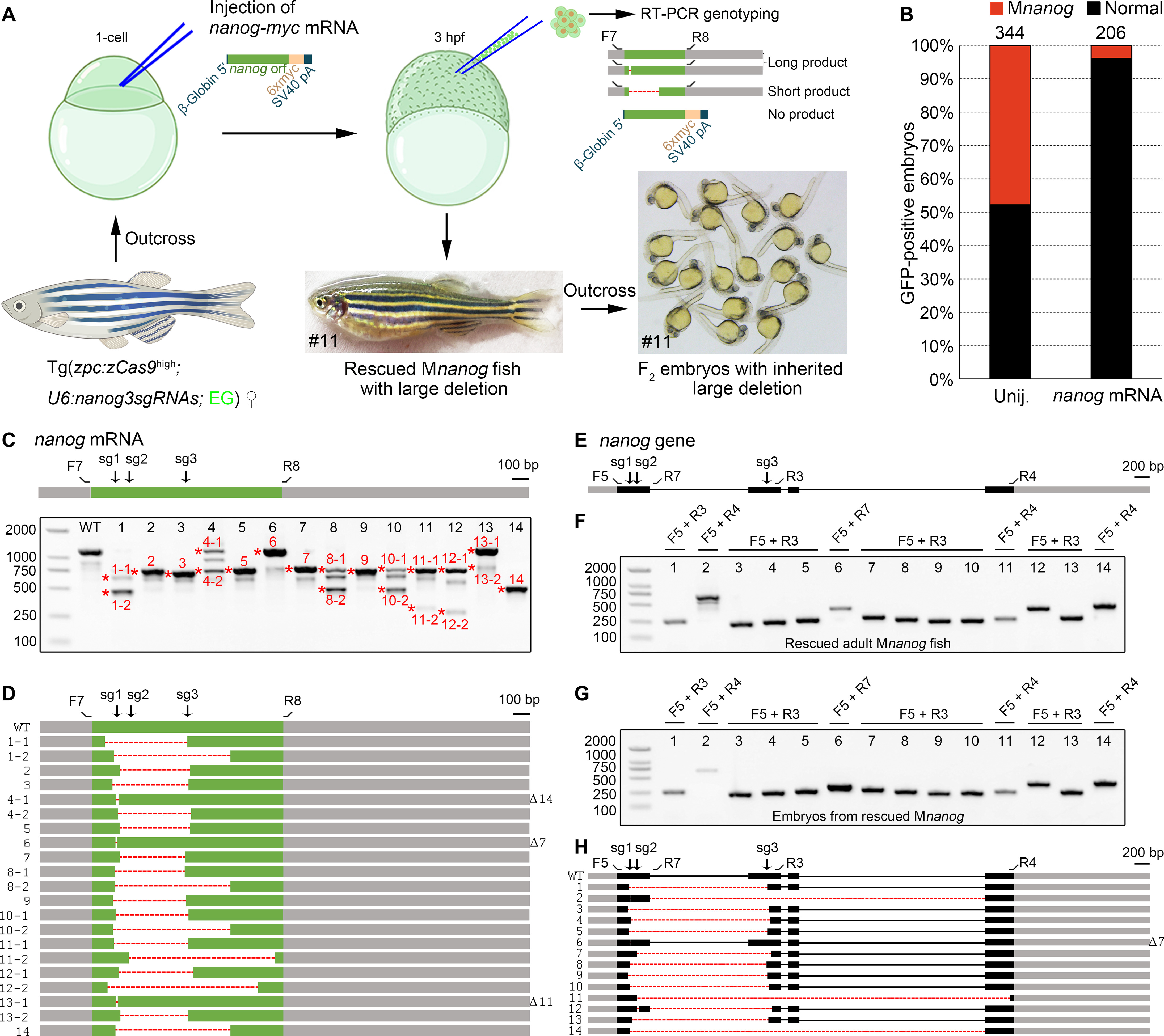Fig. 5 (A) Diagram demonstrates the rescue of Mnanog lethal phenotype by injection of wild-type nanog-myc mRNA, identification of rescued maternal mutants, and the resulted deletion-containing F1 fish and F2 embryos. A pair of primers was designed to specifically amplify the CDS of endogenous nanog mRNA. The rescued F1 adult female fish shown in the diagram carries an inherited unintended large deletion in one allele. Thus, F2 offspring derived from outcross with a wild-type fish developed normally. (B) Stacked bars show the efficient rescue of Mnanog lethal phenotype by injecting 150 pg per embryo nanog-myc mRNA. (C) RT-PCR analysis of nanog coding region in 14 rescued Mnanog embryos. Asterisks and numbers designate bands subjected to Sanger sequencing. In the schema of nanog mRNA, gray boxes indicate UTRs, and the green box represents the CDS region. F7 and R8 represent the primer pair used for amplification of nanog ORF. The three sgRNA target sites are marked by sg1, sg2, and sg3. (D) Sequencing results of PCR products as indicated in (C). Dashed lines represent deletions. Numbers of deleted nucleotides in small indels are indicated on the right. (E) Schema of nanog gene with sgRNA target sites and genotyping primers indicated. Gray boxes indicate UTRs, and black boxes represent coding regions. (F) PCR analysis of deletions in 14 rescued Mnanog mutant adults. Primer pairs are indicated on the top of each lane and their positions can be found in (E). (G) Similar patterns of genomic deletions in offspring derived from outcrosses of 14 rescued F1 Mnanog mutant adult fish with wild-type fish. (H) Sequence analyses of PCR products from 14 rescued F1 Mnanog adults. Their outcrossed offspring displayed identical deletions in the genome. Photo credit: Chong Zhang, Shandong University.
Image
Figure Caption
Acknowledgments
This image is the copyrighted work of the attributed author or publisher, and
ZFIN has permission only to display this image to its users.
Additional permissions should be obtained from the applicable author or publisher of the image.
Full text @ Sci Adv

